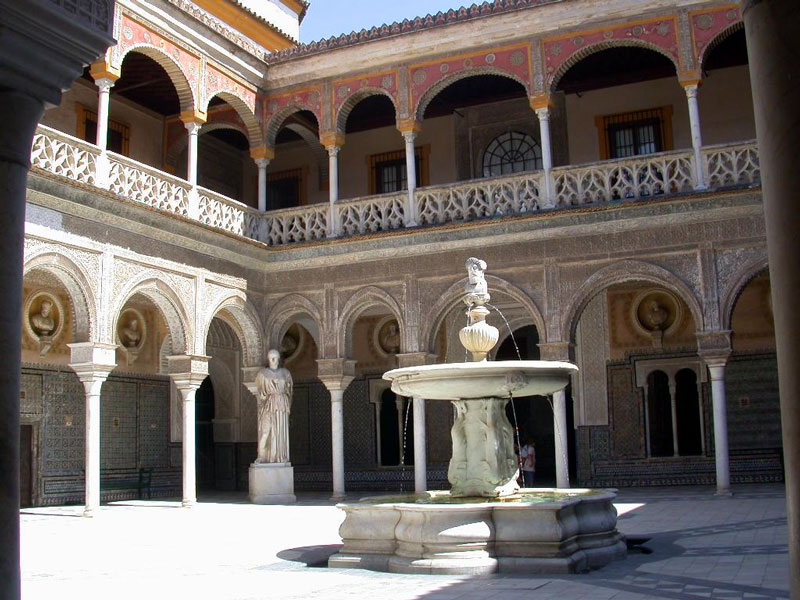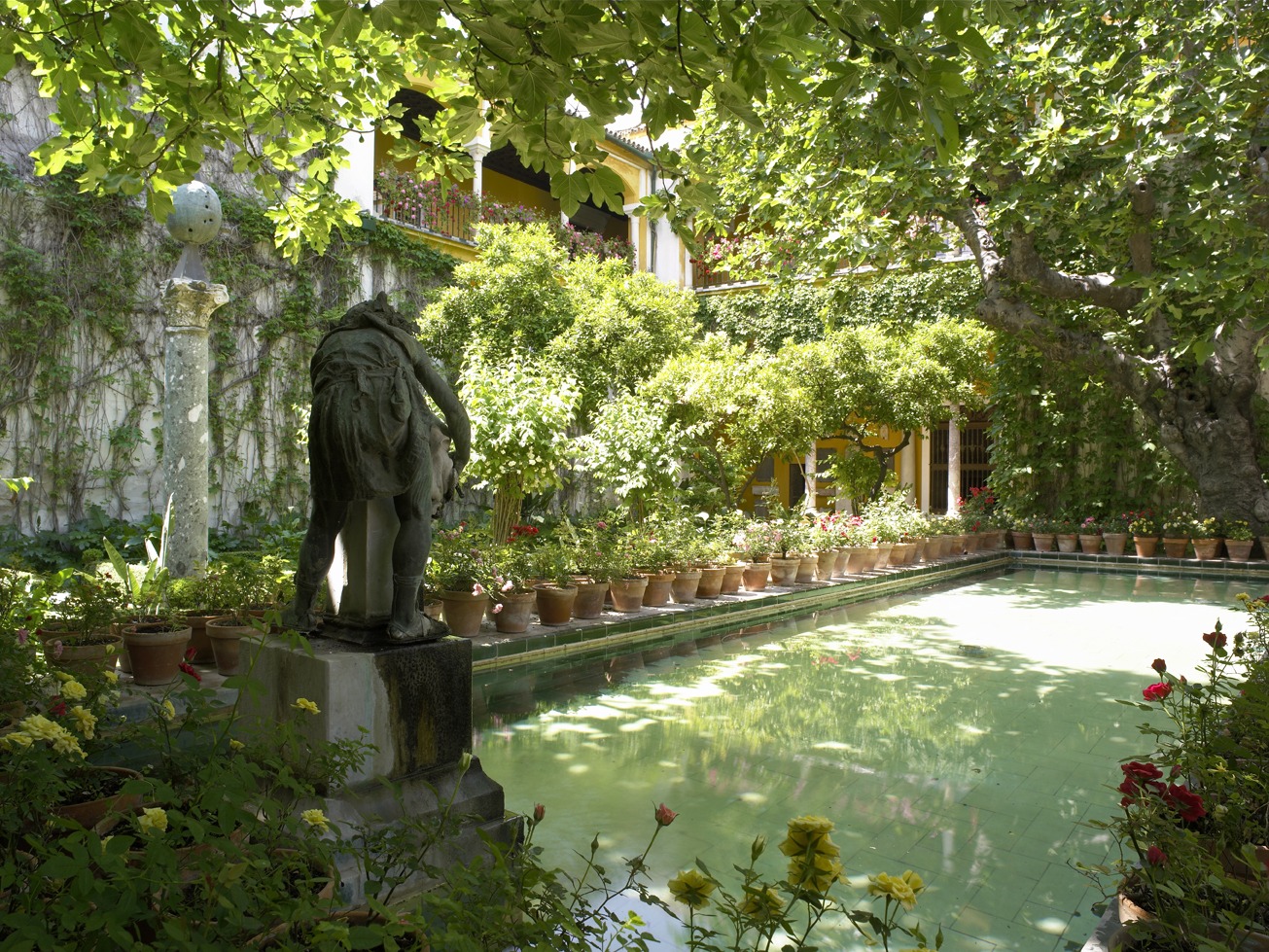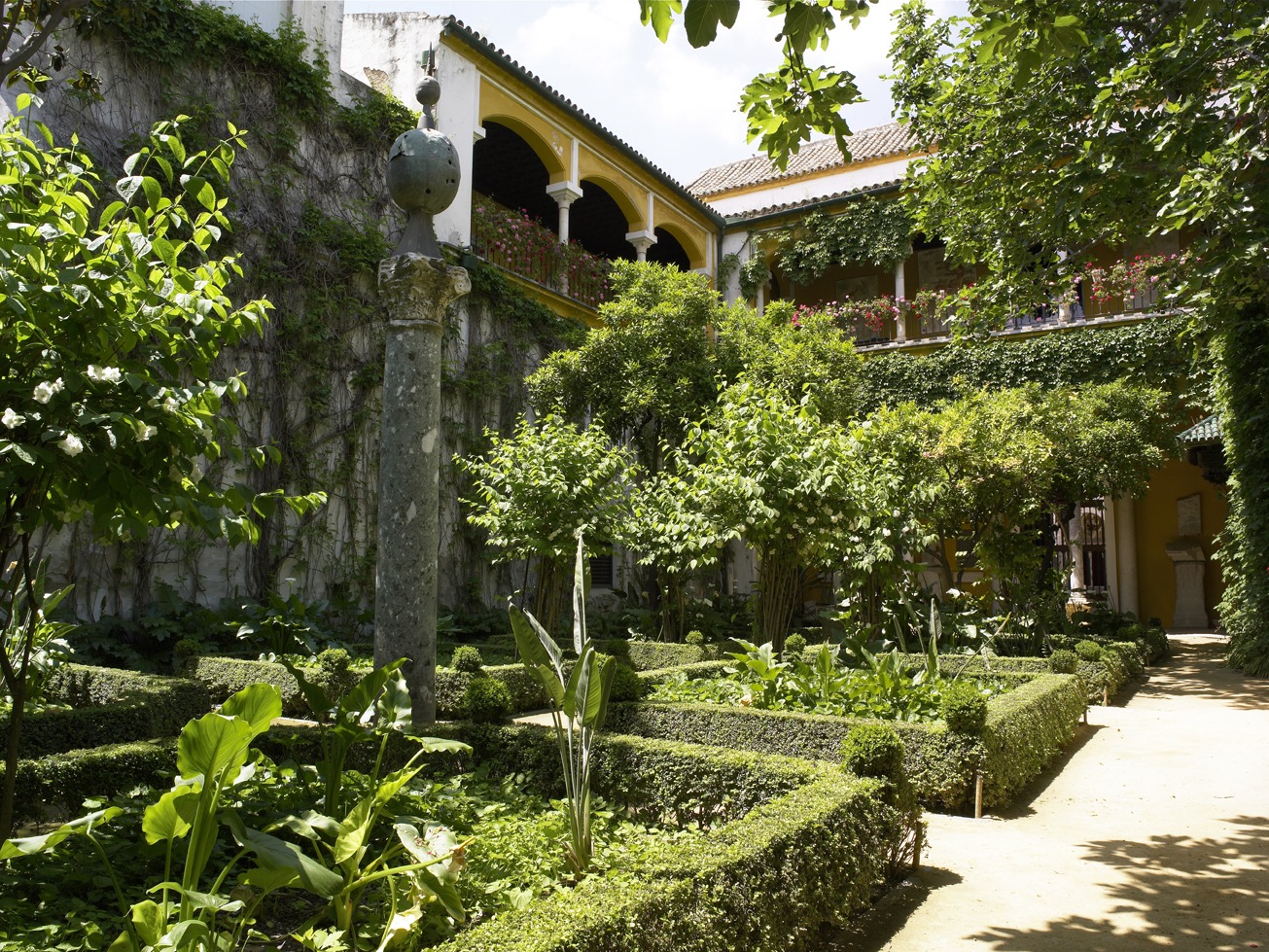15 Jan Palaces in Seville
The main part of the palaces in Seville were built during the Renaissance period (fifteenth and sixteenth centuries). Several wealthy families converted their houses in sumptuous palaces, some of them real monuments declared cultural interested goods (BIC).
Their structure tried to imitate the impressive Pedro I palace inside the Reales Alcázares, always with a courtyard in the ground floor that represents the heart of the house, and several rooms around it and in the first floor.
The most stunning example of all the palaces in Seville is Casa de Pilatos. It´s a harmonious blend of gothic, mudejar and renaissance styles. The construction was carried out by Pedro Enriquez de Ribera, after visiting Jerusalem. When he came back to Seville, he set up a Via Crucis, with the first stop at home. The last was in a cross placed outside the city, in the middle of the field. The distance between these stops is 997 meters, and why? Because he wanted the same length that separates the palace of Poncio Pilatos where Jesus was judged from the hill where he was crucified.
Already in the twentieth century a well known beer company settled down near the cross, nowadays inside the city. Do you know the brand name? (In spanish: cross=cruz and field=campo).
Once inside the palace, we can admire the central courtyard, with its mudéjar plasterwork decorations. And probably has the most important art´s collection of all the palaces in Seville. For example sculptures representing roman goddesses and emperors, paintings, marble fonts, etc. Don´t miss it! You should check why some directors chose the palace to record some scenes of their films; for example David Lean´s “Lawrence of Arabia” or Ridley Scott´s “The Kingdom of Heaven”.
Other good example of palace in Seville it´s the birth house of Miguel Mañara; he was a man who carry on his shoulders a creepy legend about the reason of changing his life after being a “bad boy“. He carried out the foundation of the “Hospital de la Caridad” in the seventeenth century, still nowadays a charity institution. The palace, inside the old jewish quarter, has a beautiful façade, with marble columns and beautiful iron grilles in their windows. If you stare at them you´ll check the different shapes!
We can also highlight the Palacio de la Condesa de Lebrija, with an important collection of mosaics; taken from Italica, an old roman city next to Seville. The “Casa de los Pinelo”, with a peaceful courtyard decorated with plasterwork leant in Carrara marble columns; and of course the famous “Palacio de Dueñas”, property of the Alba duchy and residence of the recently deceased Cayetana de Alba, a celebrity in Sevilla.
Discover the history of these palaces in our daily “free walking tour Seville“. But if you feel like customizing your visit, we encourage you to take advantage of the knowledge of a “private tour guide in Seville“, so you could get to know whichever palace you want.













